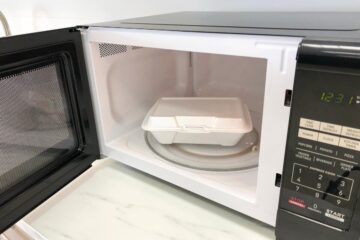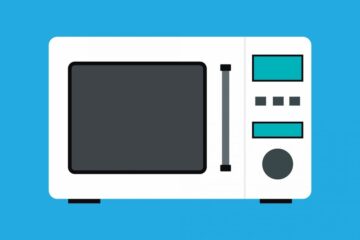Microwave ovens have become an essential appliance in today’s fast-paced world. Samsung, being a popular brand, has manufactured several models of microwave ovens. While these ovens are reliable, they may encounter errors and faults that may disrupt their normal functioning.
In this article, we will discuss common errors and faults found in Samsung microwave ovens and provide solutions to troubleshoot and solve them. We will also delve into understanding C-Codes, their significance, and how to identify them in Samsung microwave ovens. Additionally, we will share tips to ensure safe usage, proper maintenance, and care of your Samsung microwave oven.
Common Samsung Microwave Oven Errors/Faults
Overview of Common Errors/Faults
Samsung microwave ovens can display error codes when an issue is detected. These codes are shown on the microwave’s control panel and can indicate various problems, including:
- SE or 5E Error Code
- C-A or CA Error Code
- E-11 Error Code
- E-13 Error Code
- E-22 Error Code
- E-32 Error Code
- E-83 Error Code
- E-84 Error Code
Detailed Explanation of Each Error/Fault
SE or 5E Error Code
The SE or 5E error code is one of the most common issues encountered in Samsung microwave ovens. This error code indicates a problem with the control panel or keypad. The error may occur when a button gets stuck, or the control panel fails to communicate with the main circuit board.
C-A or CA Error Code
The C-A or CA error code indicates an issue with the microwave’s internal temperature sensor. This error may occur when the temperature sensor fails or loses its calibration.
E-11 Error Code
The E-11 error code indicates an issue with the microwave’s temperature sensor. This error may occur when the sensor is faulty or has become disconnected.
E-13 Error Code
The E-13 error code indicates an issue with the microwave’s magnetron. This error may occur when the magnetron fails or has become faulty.
E-22 Error Code
The E-22 error code indicates an issue with the microwave’s voltage transformer. This error may occur when the transformer fails or has become faulty.
E-32 Error Code
The E-32 error code indicates an issue with the microwave’s inverter board. This error may occur when the inverter board fails or has become faulty.
E-83 Error Code
The E-83 error code indicates an issue with the microwave’s relay board. This error may occur when the relay board fails or has become faulty.
E-84 Error Code
The E-84 error code indicates an issue with the microwave’s magnetron or power transformer. This error may occur when the magnetron or power transformer fails or has become faulty.
Possible Causes of the Errors/Faults
The causes of errors and faults in Samsung microwave ovens can vary. Here are some of the common reasons:
- Overuse of the microwave
- Incorrect installation
- Electrical surges or power outages
- Physical damage to the microwave
- Wear and tear over time
- Exposure to extreme temperatures or moisture
How to Troubleshoot and Solve the Errors/Faults?
Before contacting a technician or service center, here are some troubleshooting tips that may help you solve the error or fault:
- Turn off the microwave and unplug it from the power source for a few minutes. Then, plug it back in and turn it on.
- Check for any visible damage to the microwave or the power cord.
- Make sure the microwave door is properly closed and latched.
- Check the settings and ensure that the correct cooking time and power level have been selected.
- Reset the microwave to its factory settings by pressing and holding the “Stop/Clear” button for three seconds.
- Check the circuit breaker and ensure that it is not tripped or malfunctioning.
If these steps do not solve the issue, then it may be necessary to contact a technician or service center for further assistance.
Samsung Microwave Oven Safety
When using a Samsung microwave oven, it is important to keep safety in mind to prevent accidents and injuries. Here are some potential hazards to be aware of and tips for safe usage:
- Avoid using metal objects or containers in the microwave as they can cause sparks and potentially start a fire.
- Do not operate the microwave if the door is damaged, as this can result in leakage of microwave energy and potentially harm you.
- Keep the microwave clean and free from any grease or food debris to prevent fires and ensure optimal performance.
- Do not leave the microwave unattended while it is in use, and be cautious when handling hot dishes or containers.
Maintenance and Care
To prolong the lifespan of your Samsung microwave oven and ensure optimal performance, it is important to perform regular maintenance and care. Here are some tips for proper maintenance and care:
- Clean the microwave regularly using a damp cloth and mild detergent. Avoid using harsh chemicals or abrasive materials that can damage the microwave.
- Inspect the power cord and plug for any damage or wear and tear, and replace if necessary.
- Keep the microwave in a cool and dry place, away from direct sunlight or heat sources.
- Avoid slamming the microwave door, as this can cause damage to the microwave.
- Have your microwave inspected and serviced by a technician every few years to ensure that it is functioning properly.
Conclusion
Samsung microwave ovens are convenient and efficient appliances that can make cooking and reheating food a breeze. However, like any other appliance, they can experience errors and faults that may require troubleshooting and maintenance. By understanding the common errors and faults, C-Codes, and safety precautions, you can keep your Samsung microwave oven running smoothly and safely for years to come.
Remember to always refer to the user manual for specific instructions and guidelines on using your microwave oven. If you have any further questions or concerns, don’t hesitate to contact Samsung’s customer support or a certified technician for assistance.



